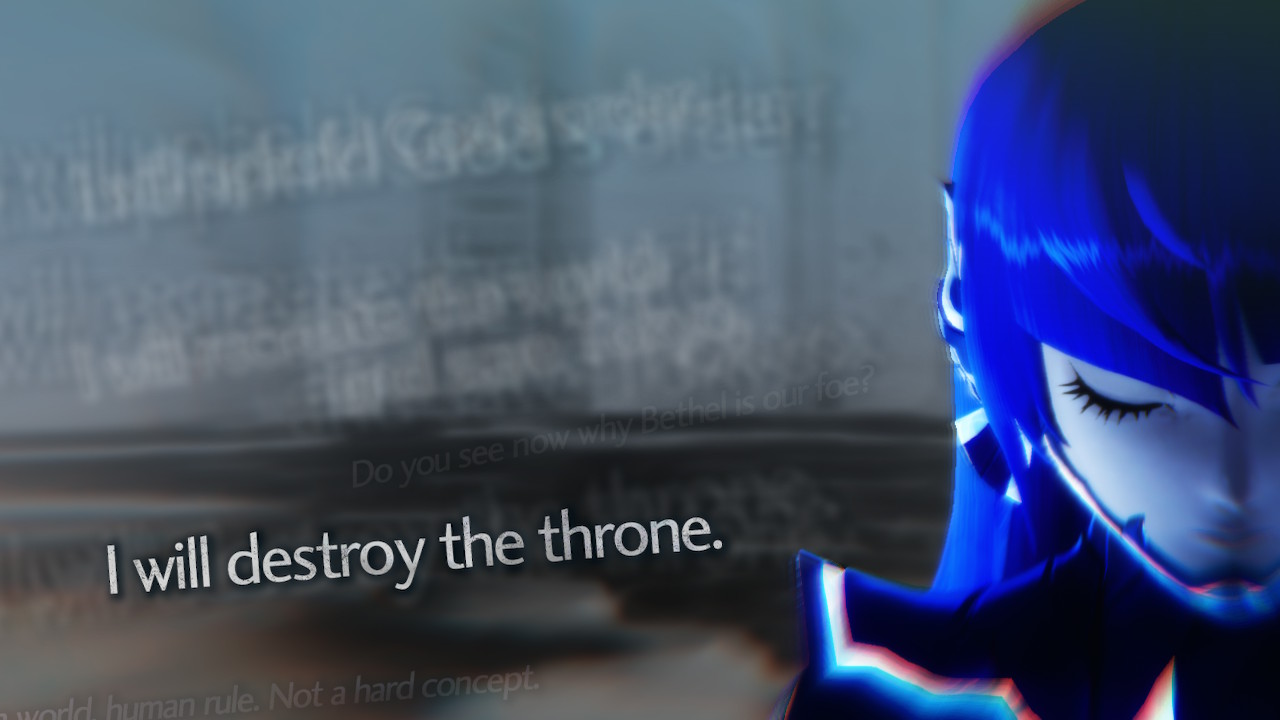1RegretBeetle
The Story of Shin Megami Tensei V
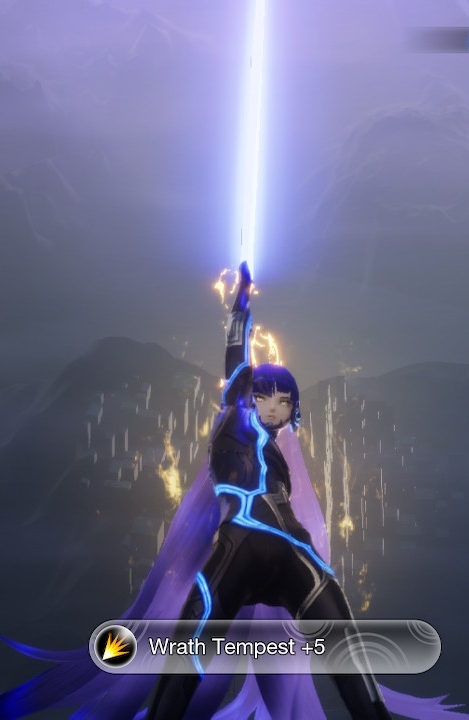
Having just completed Shin Megami Tensei V, I wanted to write down some of my thoughts on the game’s narrative while the experience was still fresh. There will be minor spoilers and a discussion of the ending in this post.
If asked for my impressions on the narrative of Shin Megami Tensei V, I would describe
it as not unlike an epic poem, akin to the familiar works of Homer or
Dante Alighieri, told through a video game.
To put it more plainly, the events of Shin Megami Tensei V feel as though they
are being recounted through a third party, who themselves are in the
process of recalling (and putting into words) tales that have previously transpired.
As a matter of fact, these
retellings leave the personal motivations and internal monologues of the main
players largely unsaid (as they would be unknown to all but an omniscient narrator),
and instead place most of the focus on the
factual exposition of climactic events, their outcomes, and the
oftentimes monumental consequences for the world as it was known at the
time. In doing so, Shin Megami Tensei V
offers, whether intentionally or not, a unique narrative that is sparse,
overly literal, and detached from the norms set by the JRPG genre.
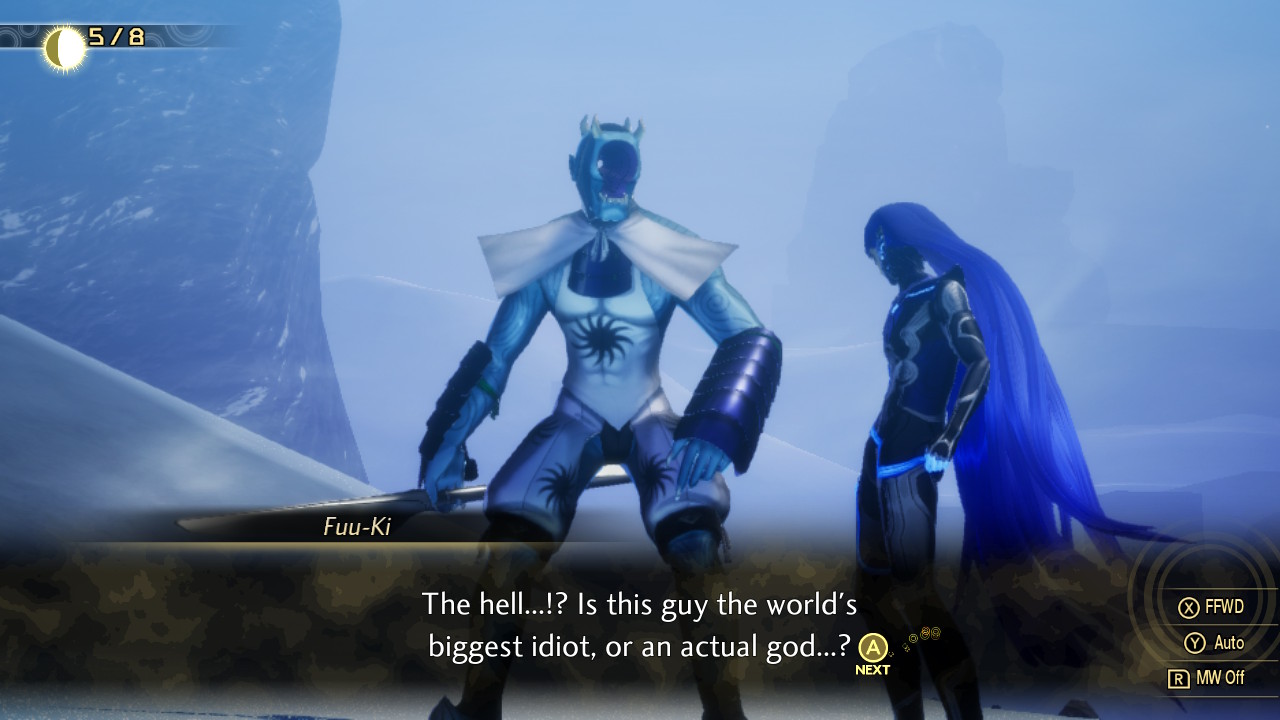
Shin Megami Tensei V is driven solely by its big ideas, its few setpiece events, and the general atmosphere that it creates through the player’s exploration of Da’at, the name used for this iteration of post-apocalytic Tokyo. As such, the game lacks many of the conventional elements that a JPRG would use to craft its narrative. For example, the spoken dialogue during cutscenes does little more than to explain the events as they are unfolding for the main actors, in a way that only serves to facilitate the above three foci. There is very little (if nothing) in the way of characterization, with the main characters instead acting as the personifications of rival philosophies or otherwise legendary figures with their own plans for how the world should be governed. Furthermore, the game does not follow a traditional plot structure, as multiple central conflicts are introduced and resolved without themselves playing into a grand finale, which reinforces the narrative as a history to be chronicled rather than a as story used to entertain.
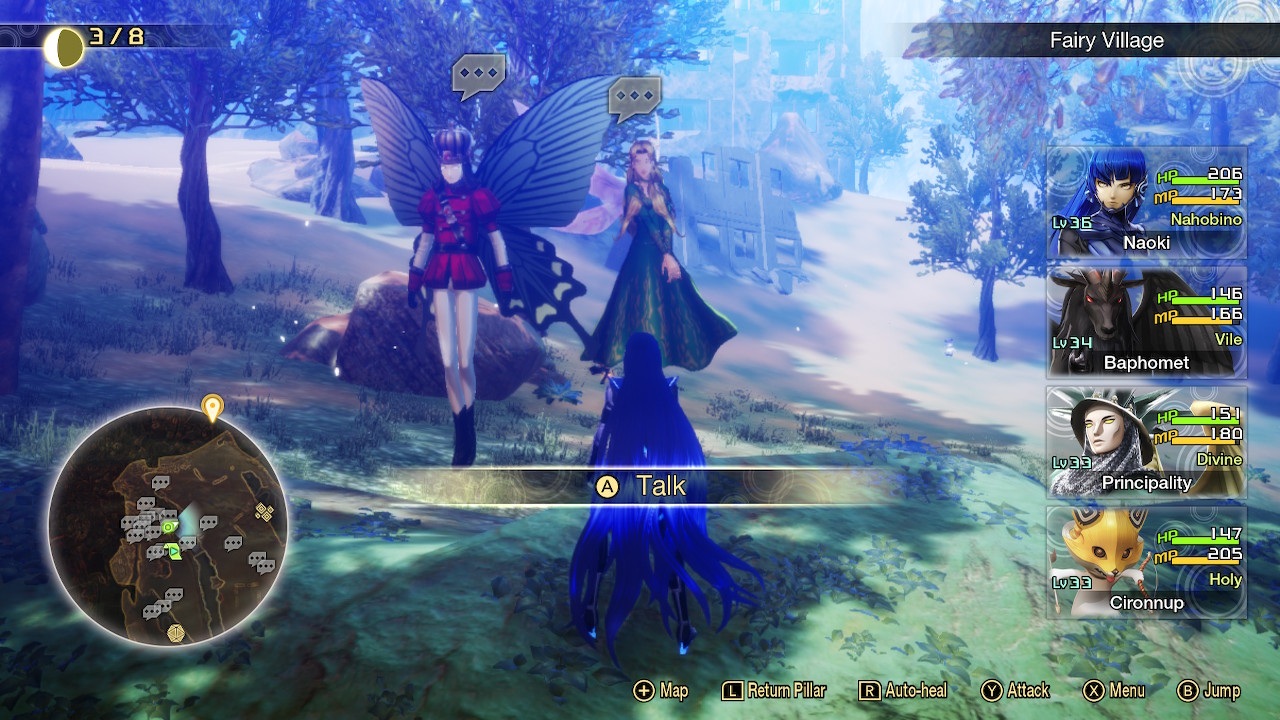
In analogy to a storyteller that takes time to set the stage, Shin Megami Tensei V dedicates itself almost wholly to atmosphere and exploration. The urban landscapes are riddled with Atlus’ classic demons which have been newly modeled in 3D, each with their own habitats and behaviors. Whereas previous games left one’s experiences with these demons largely to the imagination (with random encounters or, in the case of SMT IV, generic enemy models) Shin Megami Tensei V succeeds in constructing a living, uncompromising world whose inhabitants skulk around every corner. Legendary demons are often given their unique locations and/or optional side-plots, which further illustrate the naturally formed hierarchies within a larger, established ecosystem. Taken together, Da’at feels less like it was constructed from an existing concept rooted in the present day (i.e. metropolitan Tokyo) that was altered to suit a video game narrative and filled with mythical characters. Instead, Da’at embodies its mythos wholeheartedly.
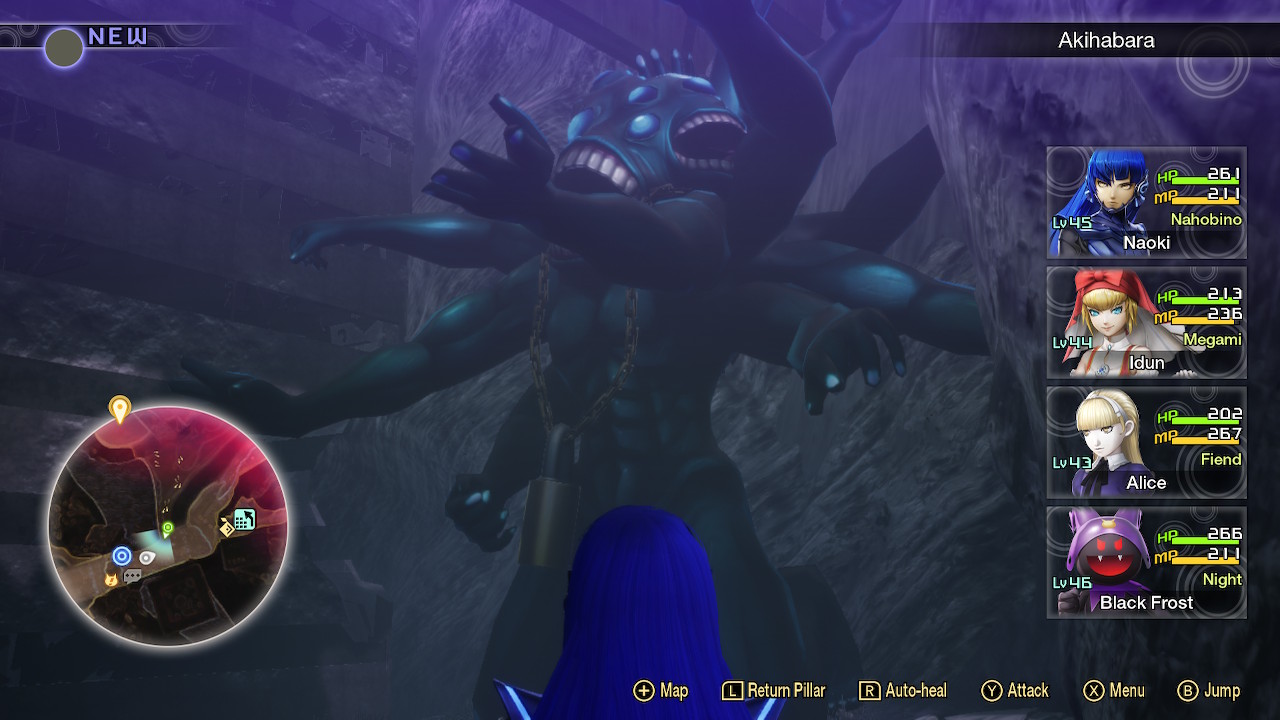
This world-building is elevated by the game’s side missions, which are exclusively given by Da’at’s demon inhabitants. Completing these side missions provides a more intimate view into the various circumstances of Da’at’s residents and their struggles for survival, knowledge, and power in the harsh environment. These substories serve as a vehicle to provide context to a world that is only alluded to in the main narrative, as if the storyteller is supplementing an imperfect recollection of events by repurposing known legends which otherwise exist in a space separate from the events of Shin Megami Tensei V. Notable examples of this include the quests involving Idunn and Loki from Norse mythology, Khonsu and Isis from Egyption mythology, and Demeter’s fight against the tyrants. Taken this way, one might also rationalize the stark disconnect between Shin Megami Tensei V’s few story beats and the resolution of these quests, as it could be argued that these side stories may not even have involved the protagonists of the present story to begin with.
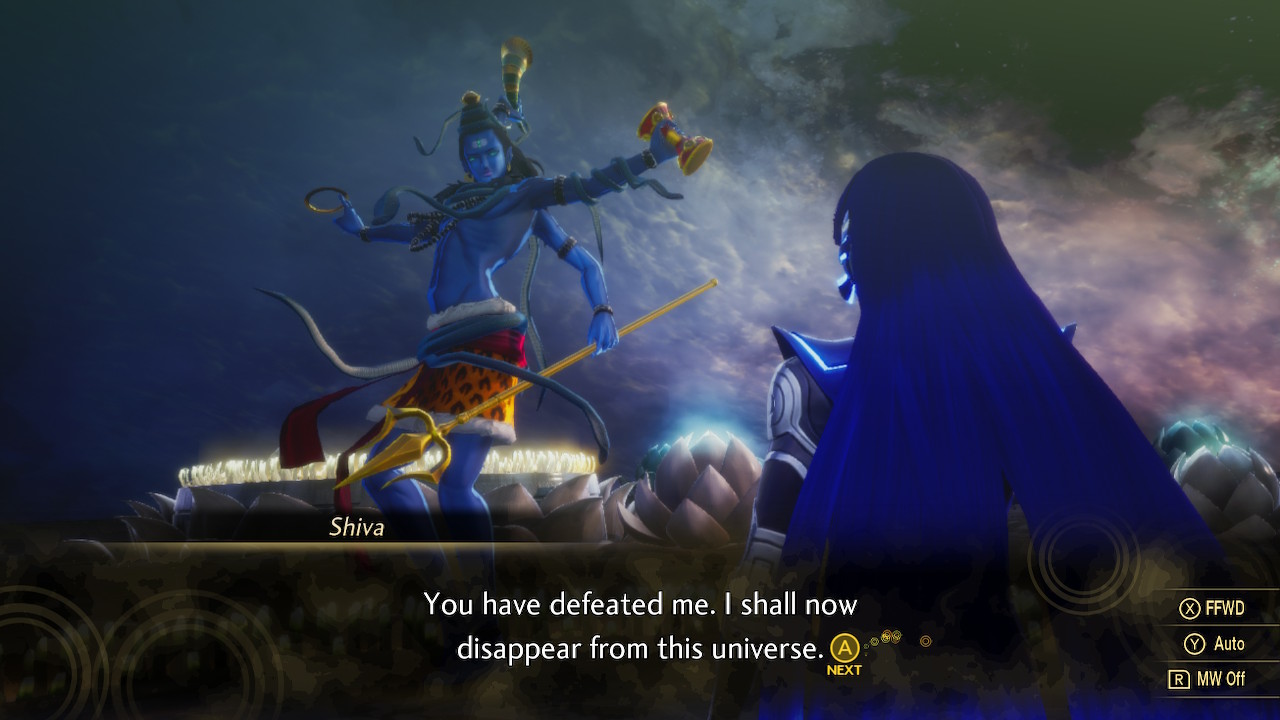
As one may be able to guess after the above exposition, Shin Megami Tensei V’s final moments are unapologetically abrupt and bewildering. Having gained the right to recreate the world through becoming Nahobino, the main characters of the story flock towards their destination while attempting to undo one another along the way. Although these inevitable events appear to build towards a grand conclusion, the outcomes of these few final battles are not explored beyond the literal consequences. The endings thus feel as if the narrator tried to conjure details of the events from memories/old legends, which did little more than to state the obvious. For example, the chaos ending feels like it was entirely based on the following brief statements:
“The Nahobino Abidel fought the Nahobino Tsukiyomi. Abidel prevailed over Tsukiyomi.
Then the Protagonist Nahobino [for lack of a better word] fought the Nahobino Abdiel. The Protagonist Nahobino slew the Nahobino Abdiel.
The Protagonist Nahobino fought the Nahobino Nuwa. The Nahobino slew Nuwa
Now uncontested, the Progaonist Nahobino learned the meaning of Chaos from Lucifer and recreated the world”
with the other endings being equally matter-of-fact. The conclusion of the game thus yields the same resolution and catharsis (or lack thereof) that one may have felt upon reading the quotations above. The ending is unemotional to a fault, regardless of its intentions or the efforts of a would-be oral storyteller.
In light of the observations made above, I can understand why the story of Shin Megami Tensei V is a point of controversy, as such narrative extremes exceed even that of its predecessor and closest inspiration, Shin Megami Tensei III Nocturne. Even the heavy rationalizations that I presented above do not change the story into something satisfying. However, interpreting the story of Shin Megami Tensei V as a vicarious experience derived from an oral legend makes the story much more palatable, in my opinion. Thanks for reading!
